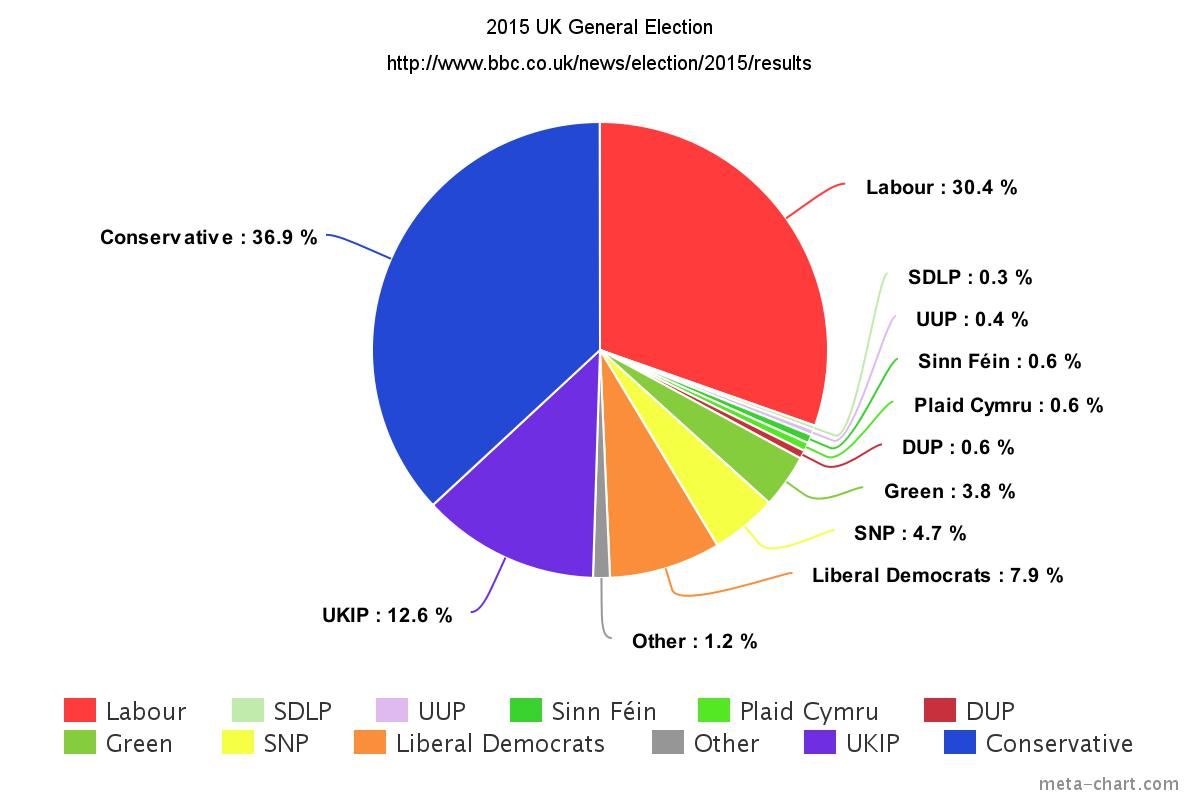British Vote System

I am not a fan of the first past the post system we have in Britain, as it does not properly represent the will of the people. Other systems such as the Alternative Vote, Party-list proportional representation, Single Transferable Vote, or hybrids like Mixed-Member Proportional Representation, do not really appeal to me either. They are better in some aspects, but introduce other issues down the line and can become very complex when scaled up. Instead of going into all the things I think are wrong with them, I thought I'd put up my mind to designing a new system, after all it's really no different to designing war games: a set of rules to figure out a result. What follows is the result of these thoughts, and new system I christened: (new) British Vote System or BVS. I like the idea that the system should be named after Britain, but I'm open to a 'technical' name if you can come up with one?
This idea is to have local constituencies, but also a form of proportional representation for Westminster, along with getting the most powerful voices in the cabinet, and coalition governments the norm. Here's how BVS would work;
Each party fields candidates for constituencies for the General elections as normal. Nothing changes there (for now). However instead of these candidates going directly to Parliament as an MP new rules are introduced to filter the MPs, and determine who obtains a cabinet post.
Working with the following data from the 2015 general election to illustrate the points presented;

Source: BBC
Overview of the British Vote System rules;
Each voter gets one vote as they do now.
First change - PM: The party with the most votes (total) has their leader become the PM, in this case it would still be David Cameron.
Second change - seats: Parliament now has 100* seats for MPs, with seats assigned based on each full percentage point share of the vote. In the above we see that Conservative would have 36 seats, Labour 30 seats, UKIP 12 seats, Liberal Democrats 7 seats, Green 3 seats. All other parties did not get a full percentage point, so they do not get a seat as such (see the next bit about leaders). So 88 seats are filled, leaving 12 seats unallocated for now.
*I'm using 100 to make the point as it's a nice simple number. There're currently 650 seats in parliament, so a seat could be allocated per 0.15% of the vote.
Any leftover percentage points are invested in the party's leader; so David Cameron would actually have 1.8% share of the vote. Those parties with less than a percentage point invest that percentage in their leader, so Leanne Wood the leader of Plaid Cymru would get a seat but only have 0.6% share of the vote. This means the remaining parties that did not get a full percentage point of the vote still get to seat their leaders, but their voting power is proportional to their vote share.
Assigning seats to MPs: Using this system MPs do not automatically get seated. Each party assigns seats to their MPs based on the number of votes they got from their constituents. The MP with the highest number of votes is seated first, then the MP with the second highest number of votes, and so on. They keep going until all their seats are taken. MPs left over, do not get a seat (but they can still influence their party). This counters gerrymandering as across all constituencies the MPs with the highest number votes get seated first. MPs for Constituencies with low numbers of voters are unlikely to be seated, and therefore cannot obtain a cabinet post (see the next change).
Third change - The Cabinet: The cabinet posts are awarded by a party to seated MPs per 5% share of the total vote, with highest picking first. Once the party with the highest number of votes picks their first cabinet post they subtract 5% from their share, to give a new percentage that will be used to determine who picks next. This new percentage is compared to all the other parties, and the new highest percentage share gets to pick the next cabinet post. This continues, where each time a post is taken a party subtracts 5% from their percentage share to determine their new ranking. To use the 2015 election results to illustrate this system;
- # The Conservatives are top with 36.9% so they pick PM. Then we subtract 5% and see we have a new value of 31.9%.
- # Looking at all the results we see that the Conservatives new value 31.9% is the highest percentage value of all the parties, so the Conservatives get to pick another cabinet post. This time they take Chancellor, and again subtract another 5% for a new value of 26.9%.
- # The next highest share is Labour with 30.4% of the vote. They choose Foreign Secretary and subtract 5% from their share for 25.4%.
- # The Conservatives 26.9% share is now the next highest. They pick Home Secretary and subtract 5% from their vote to give 21.9%.
- # With 25.4% of the vote: Labour picks next, and their new value is 20.4%.
- # With 21.9% of the vote: Conservatives picks next, and their new value is 16.9%.
- # With 20.4%, Labour picks next, new value 15.4%.
- # With 16.9%, Conservatives pick next, new value 11.9%.
- # With 15.4%, Labour picks next, new value 10.4%.
- # Now things change-up. The new highest vote is UKIP with 12.6% of the vote. So they pick next and actually get a cabinet post. They new value is 7.6%.
- # The next highest value is 11.9% so the Conservatives pick next, and their new value is 6.9%.
- # With a value of 10.5% is Labour, so they pick next, and their new values is 5.4%.
- # The next highest value is the Liberal Democrats with 7.9% of the vote. They make their pick, and their new value is 2.9%.
- # With 7.6% is UKIP, they pick, and their new values is 2.6%.
- # With 6.9% is the Conservatives, they pick, and their new value is 1.9%.
- # With 5.4% is Labour, they pick, and their new value is 0.4%.
- # With 4.7% is SNP, they pick, and their new value is 0% (no more picks)
- # With 3.8% is Green, they picks and their new value is 0% (no more picks)
- # With 2.9% is the Liberal Democrats, they pick, and their new value is 0% (no more picks).
- # With 2.6% is UKIP, they pick, and their new value is 0% (no more picks).
- # With 1.9% is the Conservatives, they pick, and their new values is 0% (no more picks).
- The next pick would be made by either the DUP, Plaid Cymru, or Sinn Féin who all have 0.6% of the vote (specific vote totals would be used). However we have run out of cabinet posts (UK currently has 21 cabinet posts).
Number of cabinet posts per party;
- 8 - The Conservatives
- 6 - Labour
- 3 - UKIP
- 2 - Liberal Democrats
- 1 - SNP
- 1 - Green
Total number of cabinet posts: 21.
It also should be noted that it would be very likely that the leaders of Labour, UKIP, Liberal Democrats, SNP, and Green would be in the cabinet! (it's going to be a blood bath :D). All these cabinet ministers would have to work together and come up with a combined government policy, where each party would strongly lobby for their manifesto for their portfolio. If a party has control of a government department they can insist that their policy be accepted. In the above example, Labour has the Foreign Secretary and they could insist that Labour's foreign policy be adopted (along with views on MI6 and GCHQ) and incorporated into the coalition government's policy positions. This holds true for each government department a party holds: the department's positions switches to that of the party that controls it.
A new government policy is stitched together from all the component parts of each parties manifesto pledges for the department they hold.
Although assigning cabinet posts is a little more complex in this system, it's handled by the politicians who are well used to dealing with such things. All the public needs to know is the more votes a part gets, the more power the party gets, and the more cabinet posts they will get. Parties could trade cabinet posts, so a bit of horse trading would happen.
I imagine that in time more independents will run and form a block, and slowly party politics will fracture.
At a later date, similar systems can be used for the local elections, but that's a story for another day...
Oh, lots of links to CGP Grey
Subscribe | Patronise | Contact
Comment
Hearing feedback is very important to me in developing my ideas. Much of my designs are inspired, and crafted, by chatting to fans on forums before snowballing into a full concepts posted on this website. I would like to thank all those who have contributed critiques and participated in discussions over the years. If you would like join in, you are most welcome!
To support my work: Connect
